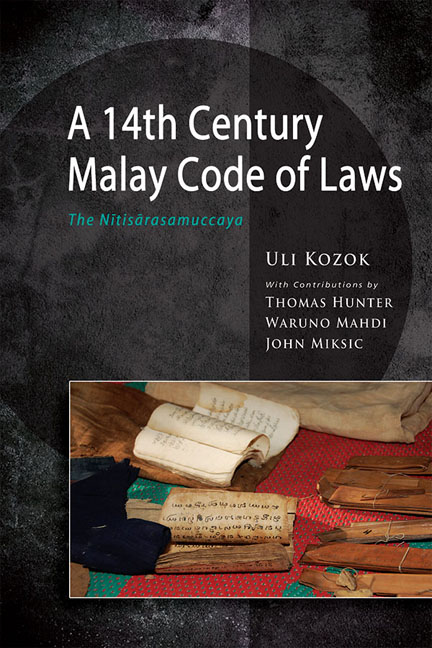Book contents
- Frontmatter
- Contents
- List of Tables
- List of Figures
- Abbreviations
- Preface
- About the Contributors
- 1 Pusaka: Kerinci Manuscripts
- 2 Kerinci and the Ancient History of Jambi
- 3 Tanjung Tanah Manuscript TK 214
- 4 Script and Language of the Tanjung Tanah Manuscript
- 5 Tanjung Tanah Manuscript TK 215
- 6 Sanskrit in a Distant Land: The Sanskritized Sections
- Bibliography
- Index
- Nalanda-Sriwijaya Series
- Images of TK 214
4 - Script and Language of the Tanjung Tanah Manuscript
Published online by Cambridge University Press: 19 May 2017
- Frontmatter
- Contents
- List of Tables
- List of Figures
- Abbreviations
- Preface
- About the Contributors
- 1 Pusaka: Kerinci Manuscripts
- 2 Kerinci and the Ancient History of Jambi
- 3 Tanjung Tanah Manuscript TK 214
- 4 Script and Language of the Tanjung Tanah Manuscript
- 5 Tanjung Tanah Manuscript TK 215
- 6 Sanskrit in a Distant Land: The Sanskritized Sections
- Bibliography
- Index
- Nalanda-Sriwijaya Series
- Images of TK 214
Summary
With the exception of the last two written pages that employ an apparently early form of surat incung — referred to here as incung script — the Tanjung Tanah manuscript TK 214 (hereafter referred to as “TTms”) under inspection is written in what has been characterized as Later Pallavo- Nusantaric script (Kozok 2004, p. 39). The present chapter will be concerned exclusively with the part of the manuscript written in this latter script, that has a certain resemblance to Kawi (the script used in Old Javanese).
I must confess that I had practically no prior experience with Later Pallavo-Nusantaric scripts, and would have faced insurmountable difficulties reading TTms if not for the path breaking work of decipherment already done by Poerbatjaraka, published in Kozok (2004, pp. 46–53).
Some surprise had initially been articulated in view of the circumstance that TTms was not written in the Arabic-based Jawi script of later Malay texts. However, for the early date that has been elicited, the late fourteenth century, use of an Indic script is not surprising. The contemporaneous 1380 CE gravestone at Minye Tujuh, although Islamic, is in the so-called Old-Sumatran script (Marrison 1951; Molen 2007; Stutterheim 1936).
THE SCRIPT
Out of practical considerations, I will introduce a standardized set of characters adapted from the variants appearing in the actual text of the manuscript. This font set is compared with the script used in some other inscriptions and documents in Table 4.1 (cf. also a.o. Holle 1882; Kridalaksana 1982, pp. xxi, xxiv–xv).
Consonants
Like in other Indic scripts used in South and Southeast Asia, each basic character (akṣara) typically represents an open syllable consisting of an initial consonant and a default vowel. It may be safely assumed that this vowel is an -a, as it is in Sanskrit and in Old Javanese. Besides akṣara-s for consonant-initial syllables, there are also vowel-initial syllables that will be inspected separately below.
- Type
- Chapter
- Information
- A 14th Century Malay Code of LawsThe Nitisarasamuccaya, pp. 162 - 220Publisher: ISEAS–Yusof Ishak InstitutePrint publication year: 2015



